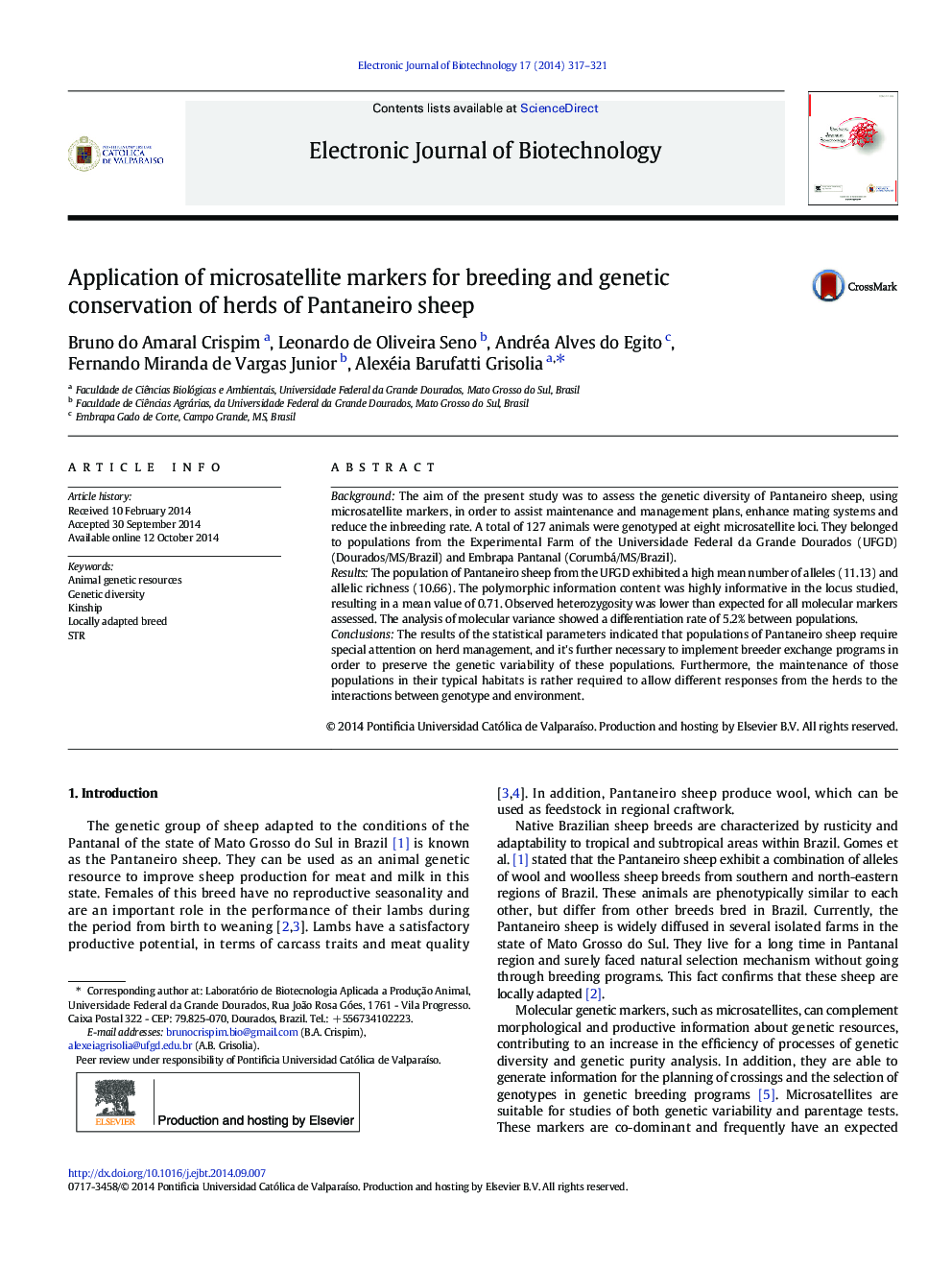| Article ID | Journal | Published Year | Pages | File Type |
|---|---|---|---|---|
| 200570 | Electronic Journal of Biotechnology | 2014 | 5 Pages |
BackgroundThe aim of the present study was to assess the genetic diversity of Pantaneiro sheep, using microsatellite markers, in order to assist maintenance and management plans, enhance mating systems and reduce the inbreeding rate. A total of 127 animals were genotyped at eight microsatellite loci. They belonged to populations from the Experimental Farm of the Universidade Federal da Grande Dourados (UFGD) (Dourados/MS/Brazil) and Embrapa Pantanal (Corumbá/MS/Brazil).ResultsThe population of Pantaneiro sheep from the UFGD exhibited a high mean number of alleles (11.13) and allelic richness (10.66). The polymorphic information content was highly informative in the locus studied, resulting in a mean value of 0.71. Observed heterozygosity was lower than expected for all molecular markers assessed. The analysis of molecular variance showed a differentiation rate of 5.2% between populations.ConclusionsThe results of the statistical parameters indicated that populations of Pantaneiro sheep require special attention on herd management, and it's further necessary to implement breeder exchange programs in order to preserve the genetic variability of these populations. Furthermore, the maintenance of those populations in their typical habitats is rather required to allow different responses from the herds to the interactions between genotype and environment.
